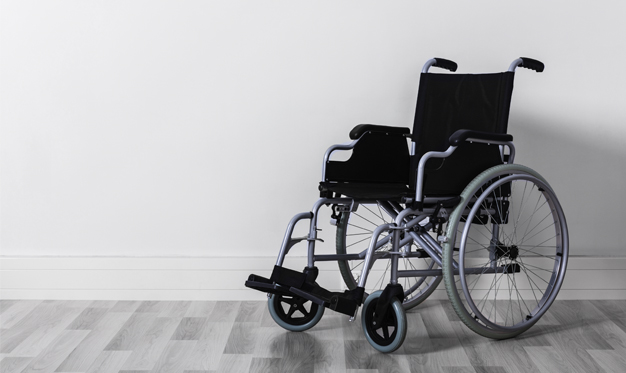Assessing the income lost by a personal injury victim depends on whether the casualty is self employed, in which case assessing the loss becomes a lot more complicated. An expert on insurance litigation for MDD Forensic Accountants gives some guidance.
Accountants are frequently retained in casualty/bodily injury/personal injury matters to quantify potential income losses. Often the quantification exercise is based on limited information provided by the plaintiff or plaintiff’s counsel. When the assessment of potential losses of income needs to be made, there is information that should be requested from the plaintiff. Each situation is unique, however, and the information is intended to be general and may not be applicable to every situation.
Before getting into the specifics, it is important to note there are two distinct types of individuals as it relates to personal injury matters: employed individuals and self-employed business owners. The information that needs to be obtained from each type of plaintiff is different.
Employee
In terms of employees, a typical information request listing would look as follows:
- Personal Income Tax Returns (T1), complete with all income related slips including:
- T4 Statement of Remuneration Paid
- T4A Statement of Pension, Retirement, Annuity and Other Income
- T4A(P) Statement of Canada Pension Plan Benefits
- T4A (OAS) Statement of Old Age Security
- T4E Statement of Employment Insurance
Other Benefits
- Notice of Assessment as provided by the Canada Revenue Agency (CRA)
- Information Tax Return Information – Regular
- Pay stubs for where no income tax return has been provided
- Current union agreement (if employee is unionized)
- Pension guide (if employee is part of a pension program)
- Benefit guide (if employee received benefits from their employer)
- Employment files
- Disability benefit file (private disability benefits or CPP Disability Benefits)
- Documentation supporting any Income Replacement Benefits received
- Typically, this information should be requested for the five years prior to the accident, this would be dependent on the specifics of each case.
Much of what is detailed above is straightforward; however, further discussion is warranted with respect to the first 3 items. Generally speaking, it is preferable to receive the detailed and completed income tax returns (#1) as opposed to the printouts that are provided by the Canada Revenue Agency (CRA) (#3), as it can be difficult to pinpoint specific sources of income with only the CRA printouts. However, if the detailed tax returns are provided, it is imperative the corresponding Notice of Assessment (#2) is provided as well. The Notice of Assessment serves to confirm that the information contained in the income tax return has been filed with CRA; if the Notice of Assessment (or the CRA printout) is not available, this may be an indication that the income tax return was not actually filed and may not be accurate. Furthermore, the Notice of Assessment will indicate when the assessment occurred, which will confirm the approximate time when the tax return was filed. If it is noticed that the requested pre-accident tax returns were all filed following the accident, this may represent a red flag and further investigation would be warranted.
Self-employed
Self-employed individuals present an additional layer of complexity. A self-employed person generally owns a business and can draw money from their business, either as a dividend, a salary and/or benefits. Ultimately how business owners choose to pay themselves is a matter of tax or financial planning, and does necessarily speak to their economic earnings from the business. It is the results of the company that should be assessed, and not how the owner chooses to transfer money from the business bank accounts to its personal bank account.
When dealing with a self-employed individual there are key questions that need to be addressed which will dictate what information is required:
- Is the business incorporated or not? If the business is not incorporated, the results of the business will be reported on the T2125 Statement of Business or Professional Activities within the individual’s personal income tax returns. No corporate income tax returns will exist. If the business is incorporated, you will require records of the individual and records of the corporation.
- How much of the business does the individual own? Frequently, self-employed individuals will own a business jointly with other individuals and, therefore, would only be entitled to the portion of losses related to their portion of ownership. Ownership of the business is outlined on the T2125 Statement of Business or Professional Activities for unincorporated businesses (within the personal income tax return) or Schedule 50 Shareholder Information for incorporated business (within the corporate income tax return).
- How does the incorporated business owner get paid? The salary drawn or dividends paid by a corporation to the owner is not in itself a measure of the income available to the owner from the business, but it does assist in making that determination. Ultimately, the income available to the business owner is the net income earned by the business, plus any salary withdrawn and any other personal expenses that were recorded as corporate expenses.
In terms of self-employed plaintiffs, a typical information request listing would look as follows:
- Personal Income Tax Returns (T1), complete with all income related slips including:
- T4 Statement of Remuneration Paid
- T4A Statement of Pension, Retirement, Annuity and Other Income
- T4A(P) Statement of Canada Pension Plan Benefits
- T4A (OAS) Statement of Old Age Security
- T4E Statement of Employment Insurance and Other Benefits
- T2125 Statement of Business or Professional Activities
- Information Tax Return Information – Regular (Personal)
- Corporate Income Tax Return (T2), complete with all supporting schedules including:
- Schedule 50 – Shareholder Information
- Schedule 125 – Income Statement Information
- Notice of Assessment as provided by the Canada Revenue Agency (Corporate and Personal)
- Financial statements (including the Income Statement, Balance Sheet and Cash Flow Statement)
- Monthly revenue summary/Monthly revenue summary by customer
- Payroll journal including a copy of all T4 Statement of Remuneration Paid slips issued
- GST/HST Remittances
- General ledger
- Bank statements
- Sales invoices
- Disability benefit file (private disability benefits or CPP Disability Benefits)
- Documentation supporting any Income Replacement Benefits received
With respect to specific documents from this list, the monthly revenue summary/monthly revenue summary by customer (#6) is often overlooked. This information is useful in determining when a decline in revenues commenced, or if the decline in revenues relates to the loss of a specific customer that may indicate the decline in income was not accident-related.
GST/HST Remittances (#8) are also useful documents as they serve to validate the sales reported in the income statements of the business. Once again, if the GST/HST Remittances do not reconcile to the income statements, further investigation would be required.
The general ledger (#9) is a listing of all accounting transactions, which occurred over a specific period of time (usually the fiscal year). This document is helpful if further examination of the business expenses is required, such as in cases where significant expense fluctuations occur following the accident.
Bank statements (#10) and sales invoices (#11) are generally requests of last resort, but may be required should other documentation not be available or its analysis warrants that a more detailed investigation is required.
Conclusion
Different documents are required when dealing with plaintiffs who are employees versus those who are self-employed business owners. A proper analysis of a business owner’s claim for lost income is generally much more complex and document-intensive. The sooner in the litigation process this information is received, the better the likelihood that a fair resolution of the claim can be achieved.
By Matt Mulholland. Published in Claims Canada in June 2013.
The statements or comments contained within this article are based on the author’s own knowledge and experience and do not necessarily represent those of the firm, other partners, our clients, or other business partners.














